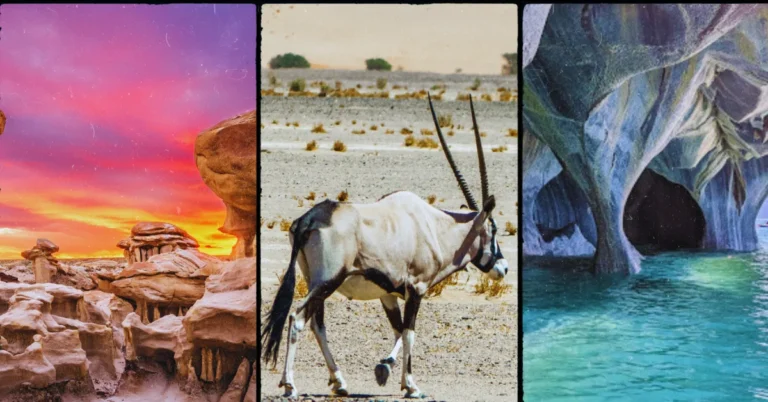Top 10 Things to Do in Iran
Despite Iran’s tough domestic government and international tensions, it is still one of the best tourist destinations in the world with its magnificent historical sites, fascinating culture, and elegant landscapes. With the election of more moderate leadership, the country is expected to open up more.
The people of Iran are warm and hospitable, and a trip to Iran will shatter the perception given by international media and the hard leadership of its own. The total population of Iran is 81.8 million, and Tehran is the capital.
Here are the top ten things to do in Iran:
1. Persepolis
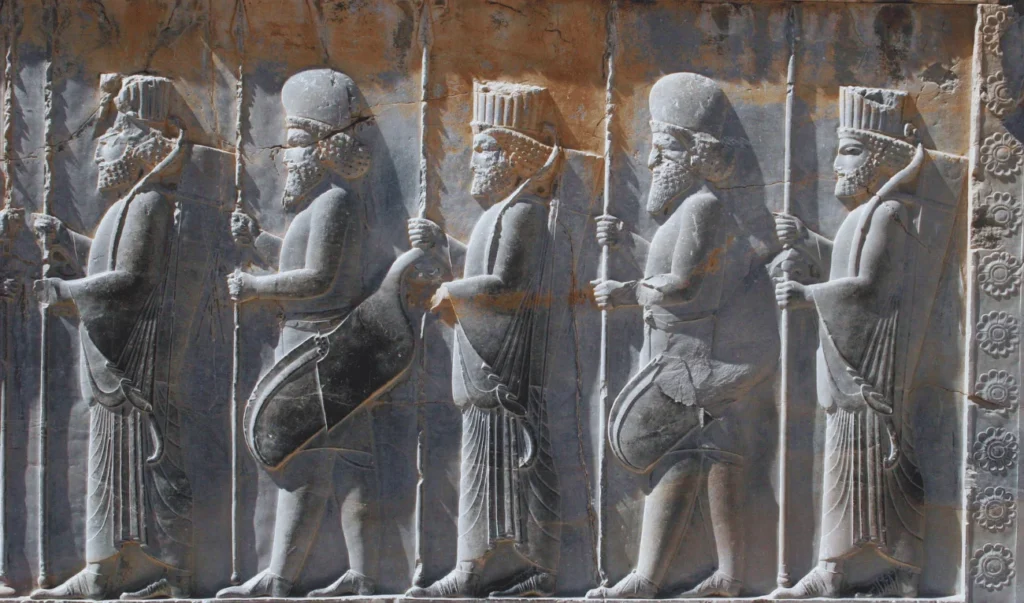
Known as Takht e Jamshid in Persian or the Throne of Jamshid in English, Persepolis was the ancient capital of the Achaemenid Empire between 550-330 BC. The ruins of Persepolis were declared by UNESCO as part of its World Heritage Sites.
Persepolis is located near the city of Shiraz, almost 60 kilometers in the Fars Province of Iran. The extremely well-preserved archaeological ruins were discovered by a French archaeologist in the 1930s.
2. Sheikh Lotfollah Mosque
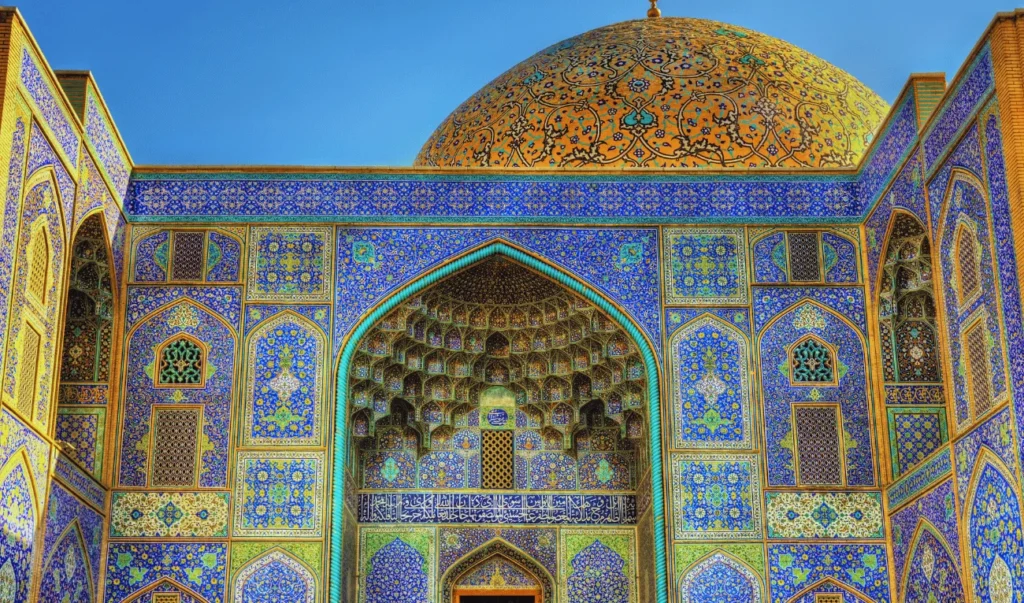
Standing near the east side of Naqsh-e Jahan Square is the best architectural triumph of the Safavid Iranian style of architecture. The construction began in 1603 and the mosque was completed in 1619. Shah Abbas I ordered the construction, and Shaykh Bahai was the chief architect. This mosque is not that large and was built to be used only by the Royal family.
3. Amir Chakhmaq Complex

Situated in Yazd, Iran, Amir Chakmak Complex is famous for its uniform sunken alcoves and is an important structure in the city of Yazd. The complex is a mosque and also contains a bathhouse, a cold water well, a tekyeh, and a caravanserai.
The building turns into a beautiful spectacle at night when it is lit up after sunset, illuminating the arched alcoves. Many Iraqis and Afghans took refuge in the complex during the Iran-Iraq wars and the US attack on Afghanistan.
4. Naqsh-e-Jahan Square
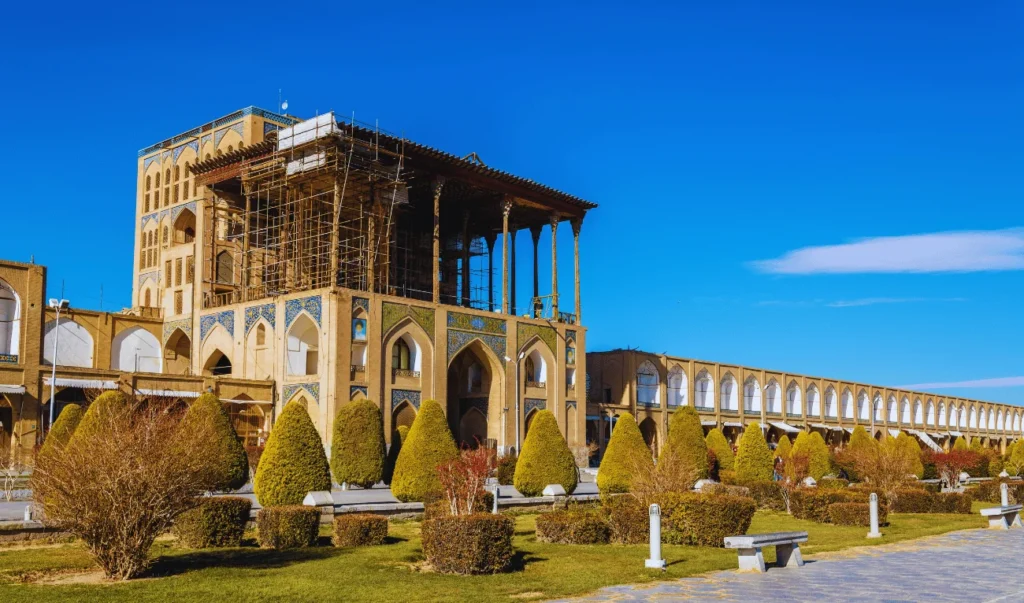
Also known as Imam Square, Naqsh-e Jahan Square was previously called Shah Square. This square is located in the middle of Isfahan city. It was built first in 1598 and then in 1629, and now it is part of UNESCO’s World Heritage Sites.
Naqsh-e Jahan Square consists of amazing gardens with beautiful fountains, vibrant bazaars, and magnificent Islamic structures like palaces and mosques. Naqsh-e Jahan Square is also the world’s second-largest square.
5. Hazardastan Traditional Teahouse
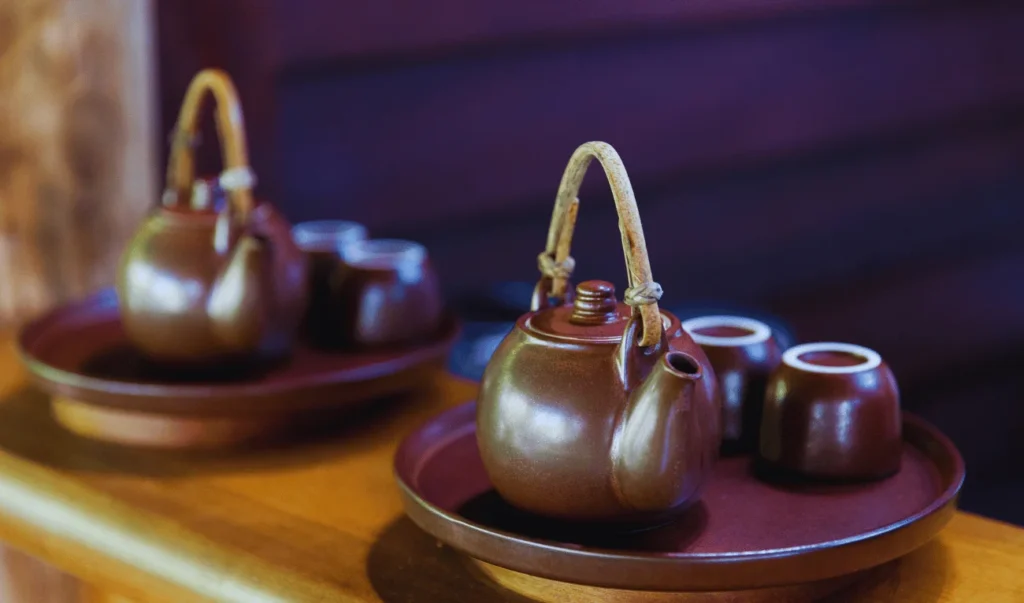
Adorned with carpets, antique kalyans, samovars, wooden benches, and cushions, Hazardastan is the most beautiful teahouse restaurant in Iran. The walls have paintings depicting the Shahnama of Ferdosi.
Hazardastan literally means a thousand tales and it is the best place to sit down, relax, and have a long talk or discussion with your friends and family over a nice cup of tea.
6. Grand Bazaar of Tehran
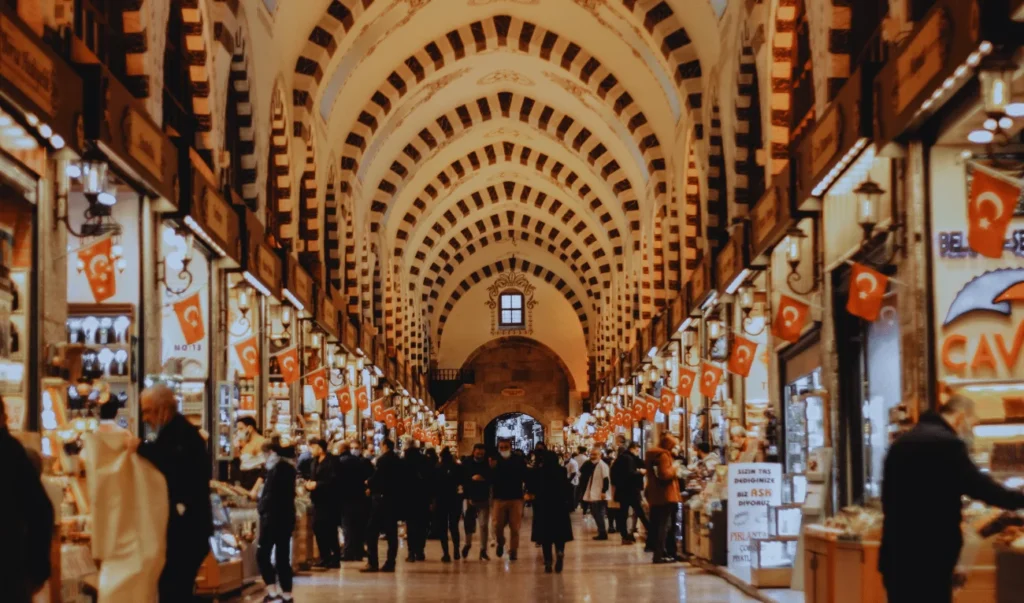
Tehran is the capital of Iran and is also the spiritual, intellectual, and political center of the country. Tehran is not as beautiful as Yazd and Esfahan, but it is far more vibrant, stimulating, and important.
The tangibly historic Grand Bazaar of Tehran is the most important commercial hub of the city. It is over 10 kilometers long and is covered from the top. The Grand Bazaar is the oldest Bazaar in the city and consists of shops, banks, financiers, guest houses, and mosques.
7. Shiraz
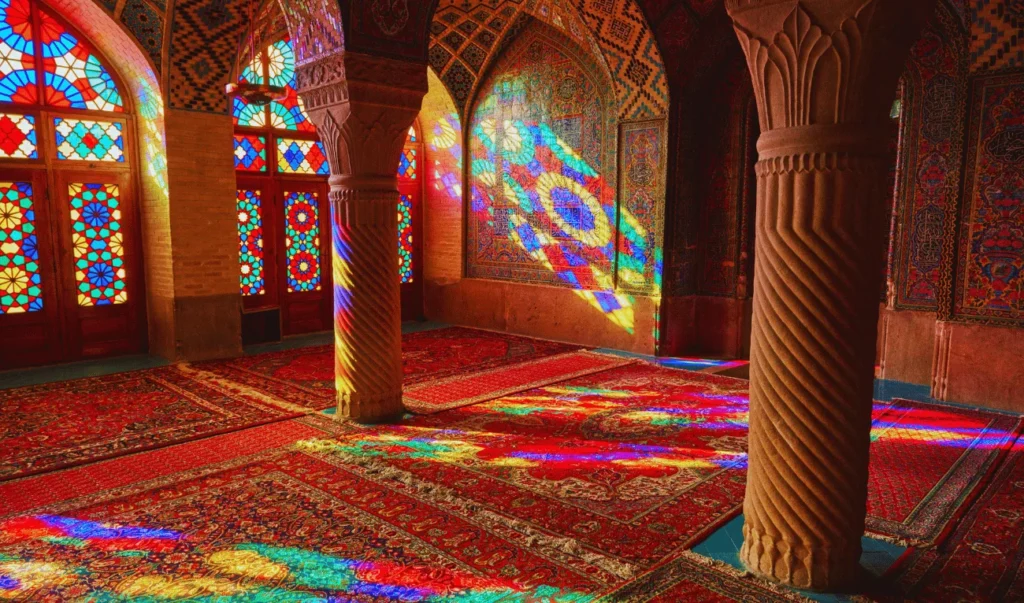
Shiraz is also an ancient city located in the Fars Province of Iran. The earliest references to the city were found on 2000-year-old Elamite clay tablets. Shiraz was a hub of arts and letters as there were numerous Persian scholars and artists in the city in the 13th century.
Shiraz is known as the city of poets, and two of the most famous Persian poets, Saadi and Hafez, belonged to this city. Their tombs are located on the boundaries of the city. Shiraz is also considered a city of gardens because there are numerous fruit trees grown in the city.
8. Kashan
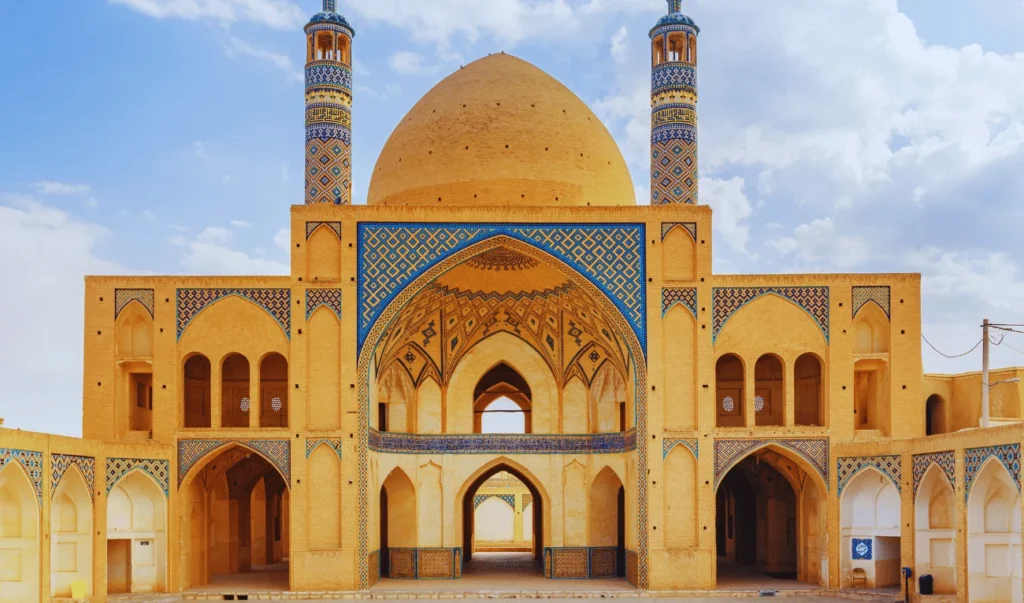
The city of Kashan is one of the oldest human settlements in history, with origins dating back to approximately 7,000 BCE, the late Neolithic age. It is located in the province of Isfahan and from the 12th to the 14th century it became one of the most prominent trading centers of Iran.
There are many popular landmarks to visit. One of them is the Tabatabaei House, which consists of four courtyards, beautifully painted glass windows, and wall paintings. This house is the perfect example of Persian residential culture. The Agha Bozorg Mosque and Hammam-e Amir Sultan are two other famous landmarks of the city.
9. Abbasi Hotel Teahouse
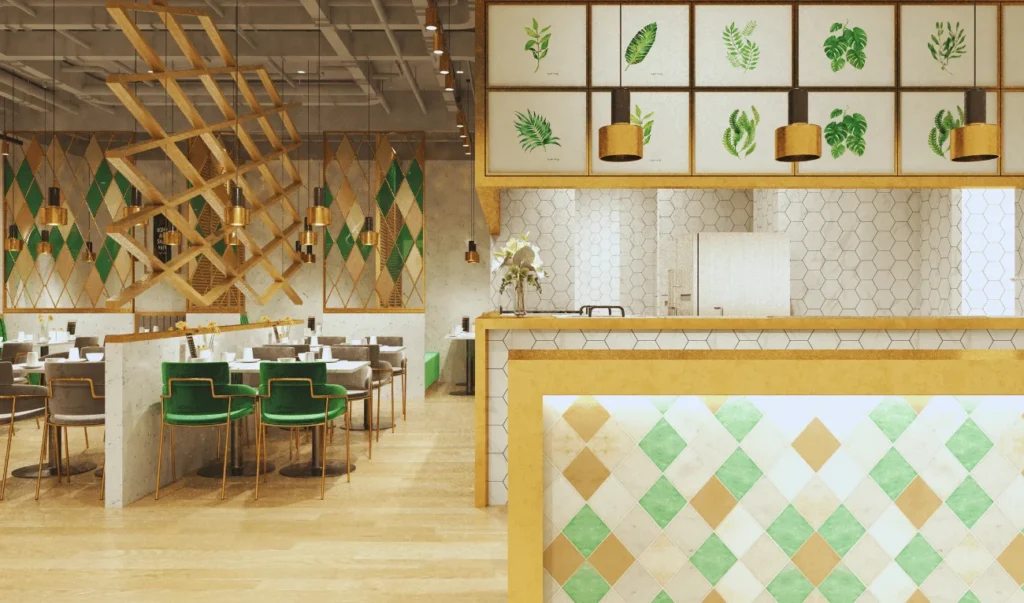
This amazing complex is worth staying a few days in, but if you are not in the mood for staying, a visit is a must. The building of the hotel was a 17th-century caravanserai complex, which has now been turned into a hotel with a rooftop restaurant and an amazing teahouse.
Although a more modern coffee shop is available in the main lobby of the hotel, it does not compare with the historic and atmospheric courtyard teahouse. The teahouse remains open until 11 PM during the summer months.
10. Bazaar of Tabriz
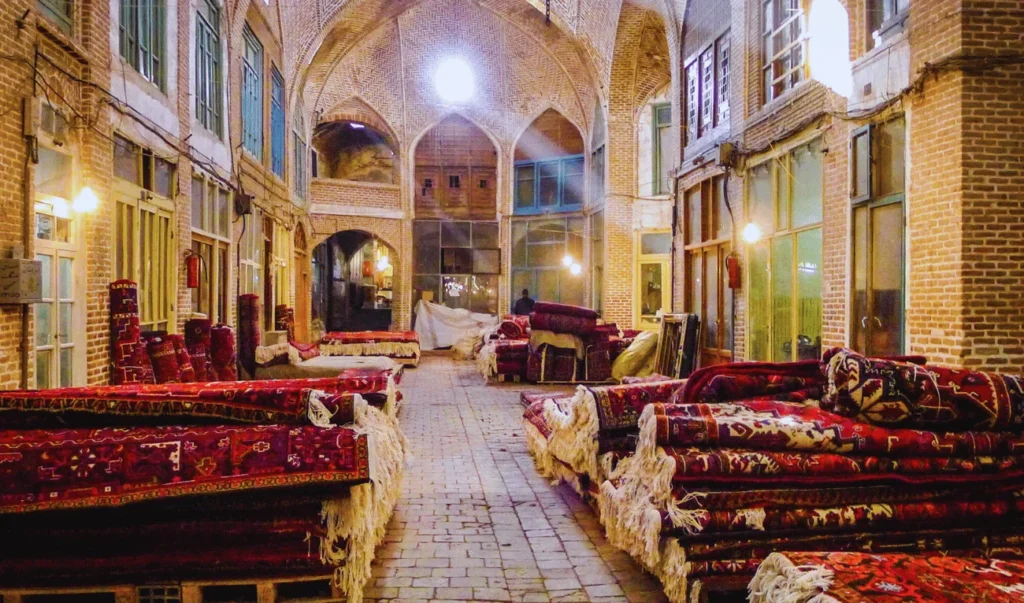
The largest covered bazaar in the world, the Bazaar of Tabriz was first established in the fifteenth century and is the oldest bazaar in the Middle East. The Bazaar of Tabriz is also part of UNESCO’s World Heritage Sites.
The bazaar consists of multiple sub-bazaars like the Amir Bazaar, which largely consists of gold and jewelry shops, the Mozaffari bazaar with carpet shops, a bazaar for shoes, and many more for daily household items. In an era with many modern malls and shops, the Tabriz Bazaar has maintained its position as the economic center of the city.

